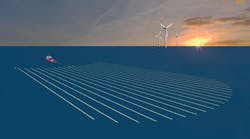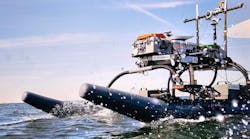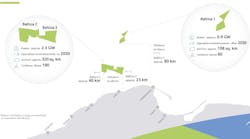Offshore staff
HOUSTON – Baker Hughes Inc. (NYSE: BHI) and CGG (NYSE/Euronext: CGG) report that their Magnitude joint venture has expanded its capabilities to provide dedicated resources and technologies for borehole, surface, and permanent microseismic monitoring. With this expansion, Magnitude offers a full range of microseismic services – including acquisition, processing, and integrated interpretation – that can help operators improve well completion design and maximize recovery at a lower cost per barrel. Specifically, these services can reduce the risks and uncertainties related to fracture stimulation operations, providing operators with the information needed to optimize stimulation designs, avoid geo-hazards, and characterize treatment impact on the formation in real time.
“Magnitude now offers a step-change in the synergies between borehole and surface microseismic monitoring for optimizing hydraulic fracturing,” said Fernando Lopez, CEO and president of Magnitude. “With the combination of expertise from both Baker Hughes and CGG in seismic acquisition, reservoir characterization, and pressure pumping technologies, Magnitude offers a complete microseismic solution for any situation.”
A key component of Magnitude’s new services is a team whose disciplines range from engineering, geophysics, and microseismic, to wireline and rock mechanics. By offering all monitoring applications, Magnitude can recommend optimum acquisition designs for any well configuration, with no bias toward any specific approach. During the fracture stimulation, microseismic data is acquired using one or more of the array configurations and processed in real time to provide almost instantaneous feedback of basic fracture network geometry, containment, event magnitudes, and other properties. This real-time feedback enables operators to adjust treatment designs on the fly, or to evaluate treatment effectiveness when coupled with fracture modeling. Post-processing analysis is then provided to optimize future well spacing, stage spacing, number of perforation clusters, and general fracture modeling for future wells.
Microseismic monitoring is used in various settings with sensors deployed in boreholes, at the surface, or near the surface. Borehole monitoring utilizes a multilevel array of geophones, placed in a nearby observation well, at a depth close to the targeted zone. Surface monitoring uses arrays of several thousands of geophones placed at ground level in a configuration specially engineered to cancel noise and maximize seismic waveform detection. Finally, near-surface monitoring relies on shallow buried arrays of a few multilevel sensors installed at 200 to 300 ft (61 to 91 m) in depth. Permanent installations can be used for large field frac monitoring, refrac monitoring, or monitoring of induced micro-earthquakes around treatment or waste disposal wells.
05/20/2014




